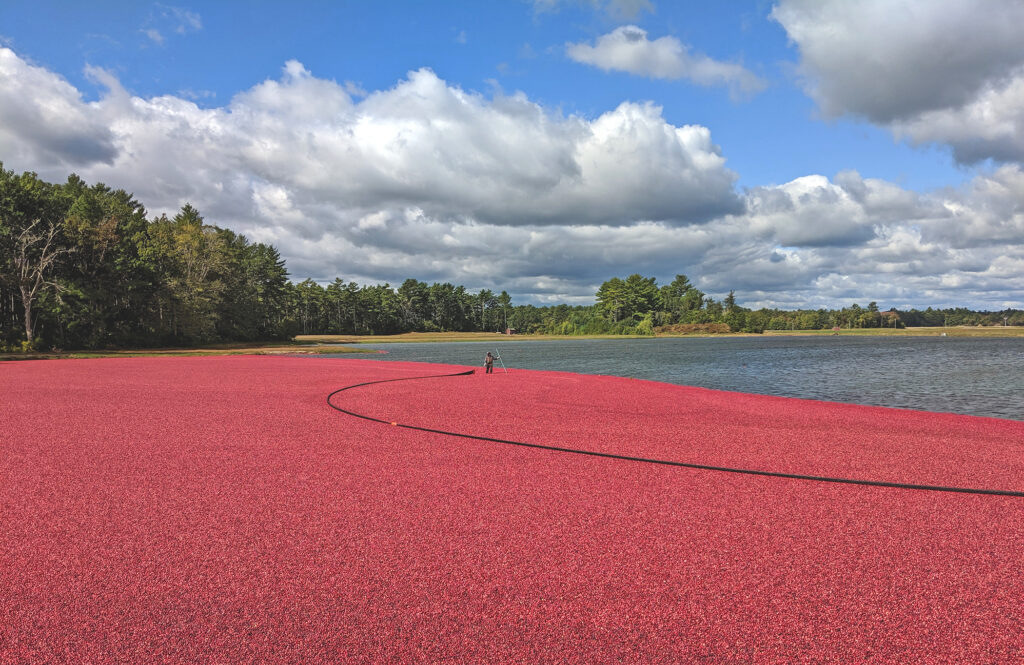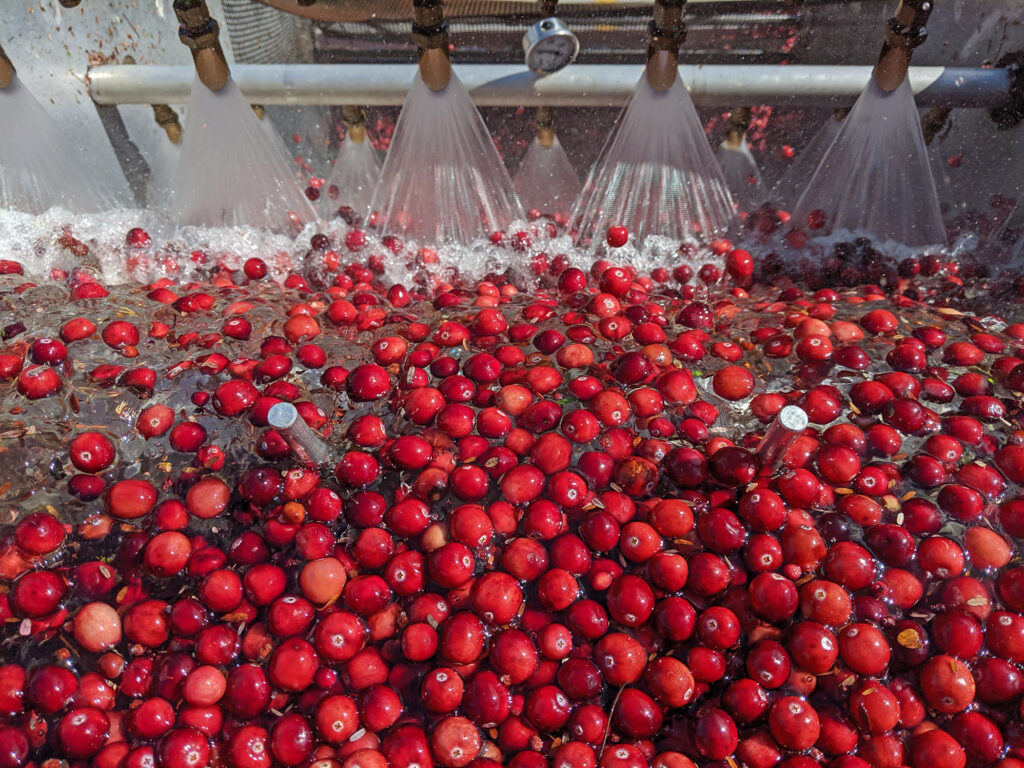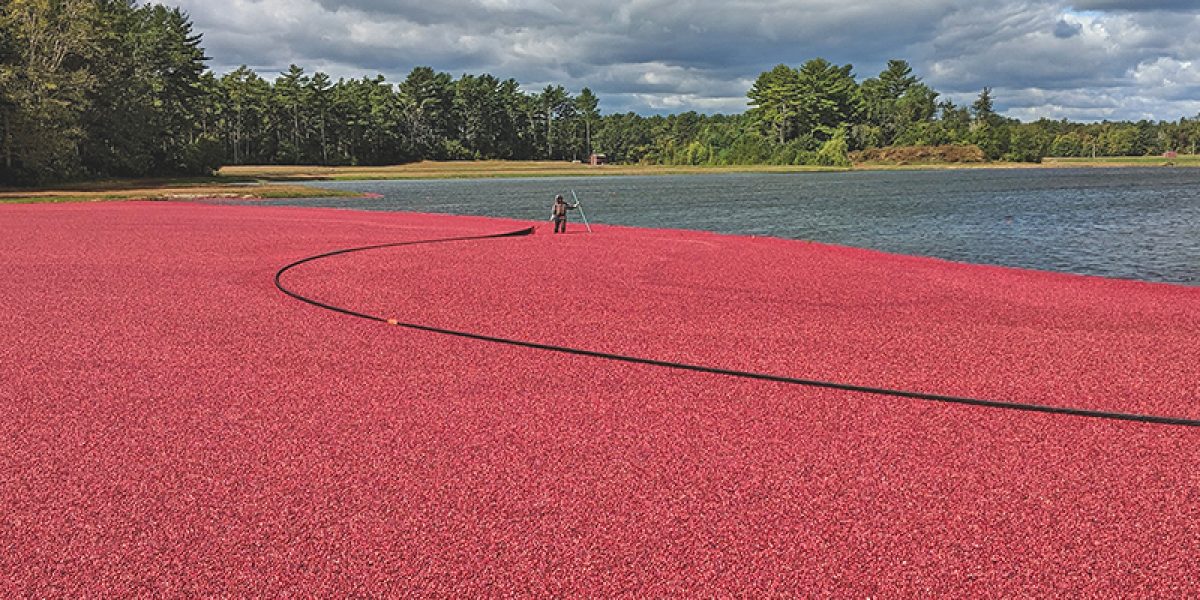
Massachusetts growers weigh in with expectations for the Commonwealth
McGRATHPR.com – The USDA National Agricultural Statistics Service (NASS) and Cranberry Marketing Committee (CMC) have both announced their 2020 cranberry crop forecasts for the United States, divided into five primary growing states – Massachusetts, New Jersey, Oregon, Washington and Wisconsin. Massachusetts is the founder of commercial production of cranberries, initiated on Cape Cod in 1816, currently the second largest cranberry growing region in the country. The Commonwealth produces approximately 23 percent of the annual national crop.
For Massachusetts, NASS’s crop projection leans optimistic, forecasting a record crop of 2.4 million barrels (each barrel equals 100 pounds), up 19 percent from the Commonwealth’s 2019 harvest. Slightly more conservative, the CMC forecast anticipates a Massachusetts crop of 2.04 million barrels, up just one percent from last year. NASS and CMC projections for the country-wide crop fall closer together, with estimates of 8.97 and 8.75 million barrels, respectively. With the 2019 U.S. crop resulting in 7.6 million barrels in total, an increase of 15 to 18 percent is anticipated this season.
According to NASS, 60 percent of the Massachusetts crop is reported in good to excellent condition, with grower input provided earlier this season. CMC’s estimate has an accuracy advantage, calculated later in August.

Representing more than 300 cranberry growers in Massachusetts, Cape Cod Cranberry Growers’ Association’s (CCCGA) leadership believe that the state’s 2020 crop is more likely to fall closer to the lower CMC estimate, rather than the record crop predicted by NASS. Recent dry weather conditions have greatly influenced expectations.
“This season has seen its share of challenges for Massachusetts growers. The mild winter brought the vines out of dormancy early, followed by a cold spring, hindering plant progression. Numerous frost events between April and early June caused a series of sleepless nights for growers. In late June, the weather excelled for pollination with dry conditions, allowing the bees to do their work. Just when growers noticed a lack of precipitation, periodic July rain events roused the growing fruit. August has brought concern with the continued lack of rain,” shared CCCGA Executive Director Brian Wick. Temperatures above 90 degrees with little to no rain is not ideal, but the berries are resilient and are able to withstand weather extremes. There is concern that the fruit may not size to full potential without adequate rainfall. Irrigation is a critical component, but not a substitute for a good, soaking rainstorm. “There is still ample opportunity for rain to refill water sources and allow the fruit to absorb moisture and grow. Farming is always complex. When your success is at the mercy of the weather, patience and ingenuity are paramount, attributes our growers demonstrate with abundance,” shares Wick.

image courtesy of Cape Cod Cranberry Growers’ Association
With impacts from the global pandemic affecting many sectors of agriculture, cranberry growers have sustained farming successfully this season. Taking precautions like distancing from fellow workers and sanitizing shared equipment have allowed the industry to endure. Extra precautions are planned for a safe fall harvest. Domestically, sales of cranberry products have been strong. Much of that growth is attributed to the numerous health benefits of the superfruit in its various forms. A daily intake of cranberries is a great way to boost immunity, among other positive health benefits. International sales have continued to face challenges, impacted by foreign trade during COVID-19 and high retaliatory tariffs in several key industry export markets.
For more information about Massachusetts cranberries and their health benefits, visit Cape Cod Cranberry Growers’ Association online at cranberries.org or follow the Association on Facebook, Twitter or Instagram.
About Cape Cod Cranberry Growers’ Association
Cape Cod Cranberry Growers’ Association represents more than 300 cranberry growers in Southeastern Massachusetts, on Cape Cod and Nantucket. Cranberries are the largest agricultural food commodity produced in Massachusetts, with an annual crop value of $60.2 million. Massachusetts is home to 30 percent of all North American cranberry acreage and according to the Farm Credit East Knowledge Exchange Report, provides over 6,900 jobs and a total economic benefit of over $1.4 billion to the Massachusetts economy. For further information, contact Brian Wick, Executive Director, Cape Cod Cranberry Growers’ Association, bwick@cranberries.org or at 508-866-7878. For the latest updates, visit cranberries.org or follow the Association on Facebook, Twitter or Instagram.







